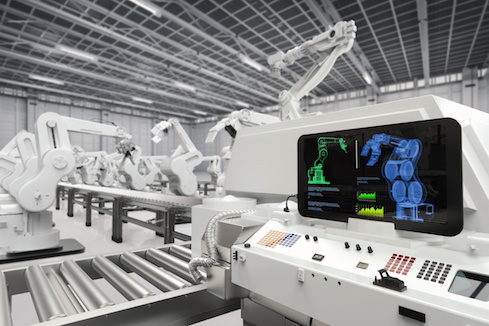People Are Key to a Tech-Enabled Audit

Technological innovation is taking audit and assurance by storm. But for PwC, it’s not all about robots and technology. It’s also about upskilling their people. “I think that technology has a role to play, and me being in the technology field, I'm very fond of technology. The reality is without competent people, technology's only going to take you so far, and it's not far enough,” explained Mike Baccala, U.S. Assurance Innovation Leader. “It's critically important that any organization that is taking this journey, including our clients, can't leave their people behind.” Baccala was joined by PwC’s Maria Moats, U.S. Audit & Assurance Leader and Pierre-Alain Sur, U.S. Assurance Process & Technology Leader at a recent a PwC Audit Innovation Demo in New York where they sat down with members of the media to showcase the technologies enhancing PwC’s audit and the many ways they’re investing in their people. There are clear risks, Baccala says, to overemphasizing technology at the expense of people and process, giving lease accounting as an example.
This is how AI bias really happens—and why it’s so hard to fix

The introduction of bias isn’t always obvious during a model’s construction because you may not realize the downstream impacts of your data and choices until much later. Once you do, it’s hard to retroactively identify where that bias came from and then figure out how to get rid of it. In Amazon’s case, when the engineers initially discovered that its tool was penalizing female candidates, they reprogrammed it to ignore explicitly gendered words like “women’s.” They soon discovered that the revised system was still picking up on implicitly gendered words—verbs that were highly correlated with men over women, such as “executed” and “captured”—and using that to make its decisions. Imperfect processes. First, many of the standard practices in deep learning are not designed with bias detection in mind. Deep-learning models are tested for performance before they are deployed, creating what would seem to be a perfect opportunity for catching bias.
Prepping the Enterprise for the AI Apocalypse

There are a lot of steps on this journey, according to Linthicum. For instance, how do you go about getting the talent and skill sets you need in-house? How do you migrate to new modernized platforms in the cloud? What's the collection of technologies that need to be put together, and how will you implement that technology in an orderly way? Enterprises need to create new kinds of infrastructure that can quickly adapt itself to the needs of the organization. Speed is important. "I think if you ask the CEOs they would say we're not funded to do it. And if you ask the board of directors and CEOs they say we want it to happen," said Linthicum. "So we just get fingers pointing both ways and nothing ends up getting done." Linthicum is predicting a brand apocalypse in which many of the familiar company names that we see every day are going to just disappear or be sold. He points to the fact that Ford Motor Co. is not building cars anymore -- just trucks and SUVs. "We need to understand that if we are going to survive in the market we have to react to the disruptors and try to disrupt them before they disrupt you. You have to leverage the technology you need to make that happen."
C# Futures: Static Delegates and Function Pointers
With each release of C#, it gains more low-level capabilities. While not useful to most business application developers, these features allow for high performance code suitable for graphics processing, machine learning, and mathematical packages. In these next two proposals, we see new ways to reference and invoke functions. A normal delegate in C# is a somewhat complex data structure. It contains a function pointer, an optional object reference for the this parameter, and a link to a chained delegate. The whole structure is heap-allocated like any other reference type, with the corresponding memory pressure. Furthermore, whenever it is used with unmanaged code it needs to be marshalled. Compared to a normal delegate, a “static delegate” is greatly simplified. It is implemented as a struct with one field, a function pointer of type IntPtr. This makes it blittable, which means it has exactly the same memory layout when used in managed and unmanaged code. Or in other words, marshalling isn’t required when calling a native system function.
2019 – Rise of the Robots? What lies ahead…

As members of the public become more aware of the capabilities and limitations of AI, they will demand more transparency and accountability in AI decision making, which will drive funding and research into such “explainable” tech. As a result, we will see more responsible use of AI, rather than just using AI for AI’s sake. The European Union’s General Data Protection Regulation will also promote a cautionary approach to machine learning rollouts within the EU, particularly where use cases involve direct or indirect processing of personal data. Underpinning this is a massive technological research drive to try and unpick the inherent “black box” nature of deep neural networks, either by re-architecting or developing complementary explicatory systems. Data Scientists are for example working on solutions to “slice” up complex ML decisions into more manageable (and defined) steps, each of which will hopefully make the task of auditing decisions easier.
14 Signs Your Smartphone Has Been Hacked

Today’s smartphones are powerful computers that allow us to perform tasks that only a generation ago would have literally been considered science fiction. Our portable devices also often contain a significant amount of personal and confidential information, including the contents of our text and email communications, as well as direct access to various of our social media and other accounts via pre-logged-in apps. It is imperative, therefore, that we keep our smartphones safe from hackers, and take immediate corrective action if we discover that any of our phones has been breached. So, how can you know that your smartphone was compromised, and that you need to take immediate, corrective action? Below are some symptoms for which to look out. Please keep in mind, however, that none of the clues that I discuss in this article exists in a vacuum, or is, on its own, in any way absolute. There are reasons other than a breach that may cause devices to act abnormally, and to exhibit one or more of the ailments described below.
Tech sector tells government that digital identity policy is 'urgently required'

“To ensure the UK does not fall behind other countries, we must create an interoperable framework for digital IDs which spans the public and private sectors,” said Julian David, CEO of TechUK. “We see instances where companies which want to bring world-class solutions to UK users often struggle to get support, either due to a reluctance to innovate or lack of a joined-up approach from key public sector bodies,” he said. “Too often, tech companies encounter difficulties which delay or obstruct innovation. It is particularly frustrating to hear British companies do not experience these problems in other countries.” Citing the growth in fraud, identity theft and the hindering of online innovation as the cost of further delay, the report says that “a coherent strategy is urgently required”. “The plea from many in the tech industry is that the issue of identity needs to be joined up to tackle the need to manage multiple digital identities and consumer expectations on ease of access to all types of online service,” said the report.
The top 4 IT security hiring priorities and in-demand skills for 2019

It’s no surprise that according to CIOs, security and people/talent top the list of core investment priorities for 2019. For IT security specifically, Information Security (InfoSec) ranked as the primary IT Security hiring priority for the next 12 to 18 months among decision-makers, according to Mondo’s IT Security Guide. Enterprise executives are taking note of the increased risks and PR damage associated with data breaches given the increase in coverage of these types of cyber attacks at major tech giants and global organizations in 2018. Additionally, the increased access and use of sensitive consumer data by various departments in a given business is providing hackers with new access points and vulnerabilities to exploit, resulting in an increased demand for enhanced InfoSec investments. As a result, Information Security Analysts, Engineers, and Manager roles are the in-demand positions for this high-end skill set.
The future of robotics: A convergence of the physical and digital

The hybridisation (there’s a word for you, technology and the dictionary are seeing hybridisation) of robots and humans are already coming together. There are ‘simple’ examples in healthcare, where robotic limbs are connecting to the user’s brain, so that an arm, for example, feels like it’s yours. It becomes an extension of that person, and adds to their sense of being. On the other side, robots are increasingly acting like humans, because the best way to interact with humans is to imitate them. But, to get this right we need to eradicate racial, gender, sexual and background prejudices that have stained society. Why? Because our robots and AI systems are going to use the social norms that we’re used to. 300 years ago prison architecture changed so that the guard could always see a prisoner. This, consequently, changed the behaviour of that prisoner. Information and knowledge of individuals can change their behaviour. In London, for example, the erection of 420,000 cameras and their position has changed the dynamic of crime.
Is 2019 the Year Agile Transformation Finally Works?
The traditional analogy of mass production encourages specialist teams focused on delivering the most efficient process for their activity. This works well when the problems are not that complex, the process can be defined, and problem well understood. Delivering value to customers is MUCH more complex than in the past where many projects were automating existing manual processes, with customers now requiring faster delivery cycles, with unknown requirements and potential technology solutions changing every few months. To be effective in this new world, it requires the formation of new, dynamic teams. Not just for the building elements but also marketing, operations and even finance. Specialists will still be required to do the work, but they will work in very different team models with different specialists. Management will change from coordinating the different teams to providing direction and helping the teams self-organize as necessary.
Quote for the day:
"Power concedes nothing without a demand. It never did and it never will." -- Frederick Douglass
No comments:
Post a Comment